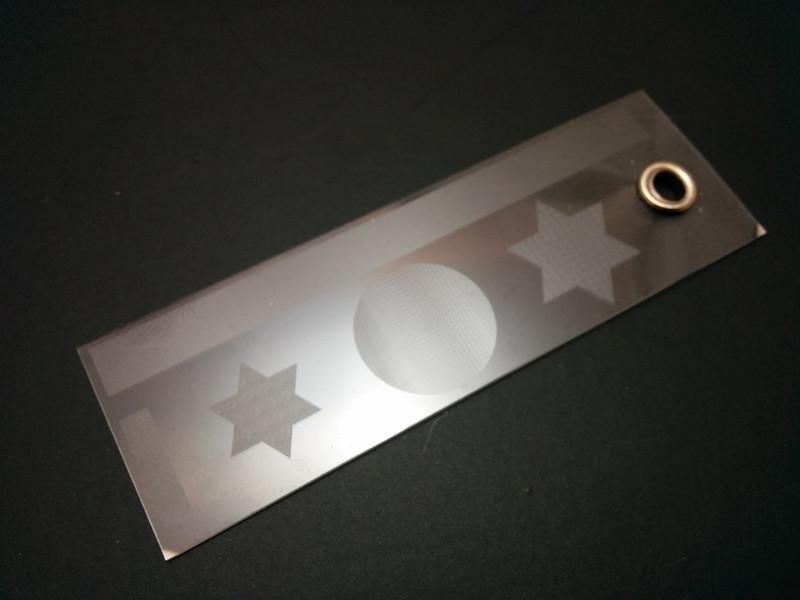
Diffractive Optical Element (DOE) - Redistributes light to create tailored patterns
107,00 kr
This optical component has a microstructured surface that diffracts light into a tailored pattern. The light is redistributed with very little loss.
Video of the sample from physicsfun
What are diffractive optical elements used for:
Diffractive optical elements are used for beam shapers, beam splitters, line generators, and diffusers. These components are used in machine vision systems, 3D sensors, bar code scanners, and measurement solutions. The Microsoft Kinect controller uses a projected dot pattern of infrared light generated with a DOE.
Details:
Standard elements are available for many applications, but the microstructure – and thereby the light pattern – can be tailored to create virtually any pattern desired. The sample is made from polycarbonate, but you can get glass elements for high-energy applications such as laser cutting and drilling. DOEs are used mostly with laser light, but partially coherent light from LEDs or other light sources can also be manipulated.
Idea:
Attach different DOEs to a laser hanging from the ceiling to project board game layouts onto a table.
The sample:
The sample measures 7,5 cm x 2,5 cm. Use a laser pointer to see five different patterns. There are two star signs, the moon, a company logo, and a globe that rotates as the laser is moved along the microstructured surface.
If you like this sample you may also be interested in our light-shaping surface sample.
All samples come with a laminated information card, which includes contact details for the supplier.
QUESTIONS & ANSWERS
Ask a Question-
I need “Diffractive Optical Element (DOE)” for QWERTY keyboard to project on surface. is it available?
A QWERTY pattern is not available as a standard pattern, but it can be made. The information card that you get with the sample includes the contact information for the manufacturer.
-
Can a custom “Diffractive Optical Element (DOE)” be done? Like a logo?
Yes, it is possible to have custom patterns produced but the tooling cost starts at €5000, so it is only feasible for large volumes or high-value applications.
